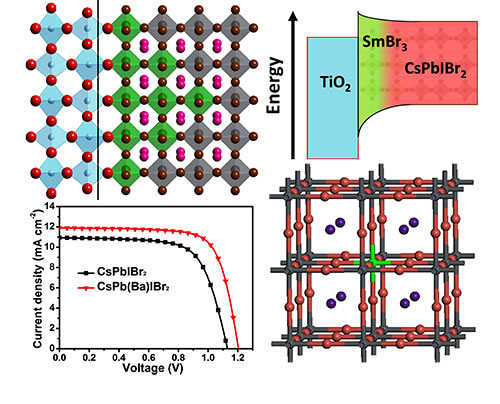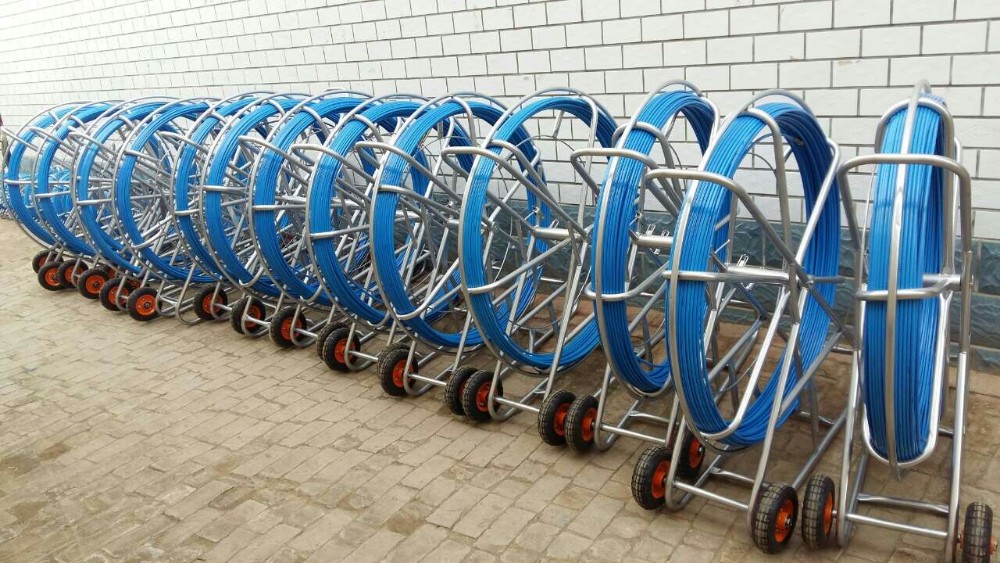
Recently, the team of Liu Shengzhong, a researcher of the thin film silicon solar cell research group at the Dalian Institute of Chemical Physics, Chinese Academy of Sciences, has made new progress in the performance control of inorganic perovskite batteries, and related results have been published in Advanced Energy Material and Nano Energy.
Organic-inorganic metal halide perovskite solar cells have attracted widespread attention due to their high photoelectric conversion efficiency. In recent years, they have developed rapidly and become a research hotspot in the field of photovoltaics. The weak force between them makes the material easily decomposed under the stimulation of external conditions, restricting its further development. In contrast, all-inorganic perovskite materials (CsPbX3, X = I, Br) have become emerging research hotspots in the field of perovskite batteries due to their excellent thermal stability. However, photovoltaic devices based on inorganic perovskite materials are not internal Radiation recombination is more serious, so its photoelectric performance still has much room for improvement.
In order to improve the photoelectric conversion efficiency of inorganic perovskite batteries and actively develop inorganic perovskite performance control strategies, the team Liu Shengzhong and Wang Kai and others adopted different strategies to suppress electronic recombination inside the device. In general, the non-radiative recombination in the device can be divided into two parts: interfacial recombination and non-radiative recombination in the perovskite film. For interface recombination, the team used lanthanide metal bromide to modify the electron transport layer / perovskite interface to form a gradient band structure at the interface to achieve the purpose of inhibiting interface electronic recombination. At the same time, interface modification can strengthen the functional interlayer Interact to promote the process of electron dynamics. Based on this strategy, the team improved the performance of the CsPbIBr2-based perovskite battery to 10.88%, which is at a relatively high level in this field. For non-radiative recombination in the perovskite film, the team adopted a strategy of metal barium ion doping to suppress this In a process, it was found in the research that although the barium ion radius does not meet the requirements of the Goldschmidt geometric law, it can still improve the photoelectric performance of the perovskite material and improve the device stability. This study shows that the perovskite material has a higher tolerance to metal hetero-ions. The above work provides a basis for the performance control of inorganic perovskites and promotes the development of inorganic perovskite batteries to a certain extent.
This work was supported by the National Key Research and Development Program, the Central University Fundamental Research Fund, the National Natural Science Foundation of China, the Liaoning Provincial Doctoral Fund, the 111 Project, and the Yangtze River Scholars Innovation Team Project.
Fiberglass Duct Rodder are composed of fiber glass rod which was extruded by fiber glass and high strength resin at high temperature. This type of rod has high tensile strength and flexibility. It was covered by a high density polyethylene engineering plastic as its protect layer(High Density polyethylene (Grade: for the insulating and jacketing of Telecommunication Cables) is used in the outer diameter coating.), which make duct rodder cover sliding on surface, durable, corrosion resistant and has good insulation performance, which make them safe for use in cable occupied duct.
And moving type fiberglass duct rodder will equipped with different size reel according to the length of rod. There are wheels on the reel, which make it convenient for moving.
Features and Benefits:
1-Light weight, durable, resistance to acid, alkali, aging resistant, corrosion resistant.
2-High tensile strength and bending properties, which make it to go through narrow pipes easily.
3-Good temperature adaptability, the product will not soften in hot weather/nor become brittle in cold weather. Its usability will not be affected by temperature.
4-Outer protect layer are made of high density polyethylene engineering plastic, which has good anti-UV capability.
5-Cover was coated with long-term UV-resistant polyethylene.
6-Its surface has the advantage of smooth, wear-resistant and long service life.
7-There are meter marks on the protect layer of duct rodder, which can be used for measuring distance. Marks are printed by professional printing machine, which has the advantage of strong adhesion, clear writing, waterproof, anti-ultraviolet, it can be still clear even after using many times.

8-There are several kinds of colors for the rod for your chosen.
Fiberglass Rodder,Fiberglass Duct Rodder,Fiberglass Conduit Rodder,Duct Push Rod,Fiberglass Duct Rod,Conduit Rod
NINGBO MARSHINE POWER TECHNOLOGY CO., LTD. , https://www.marshine-power.com